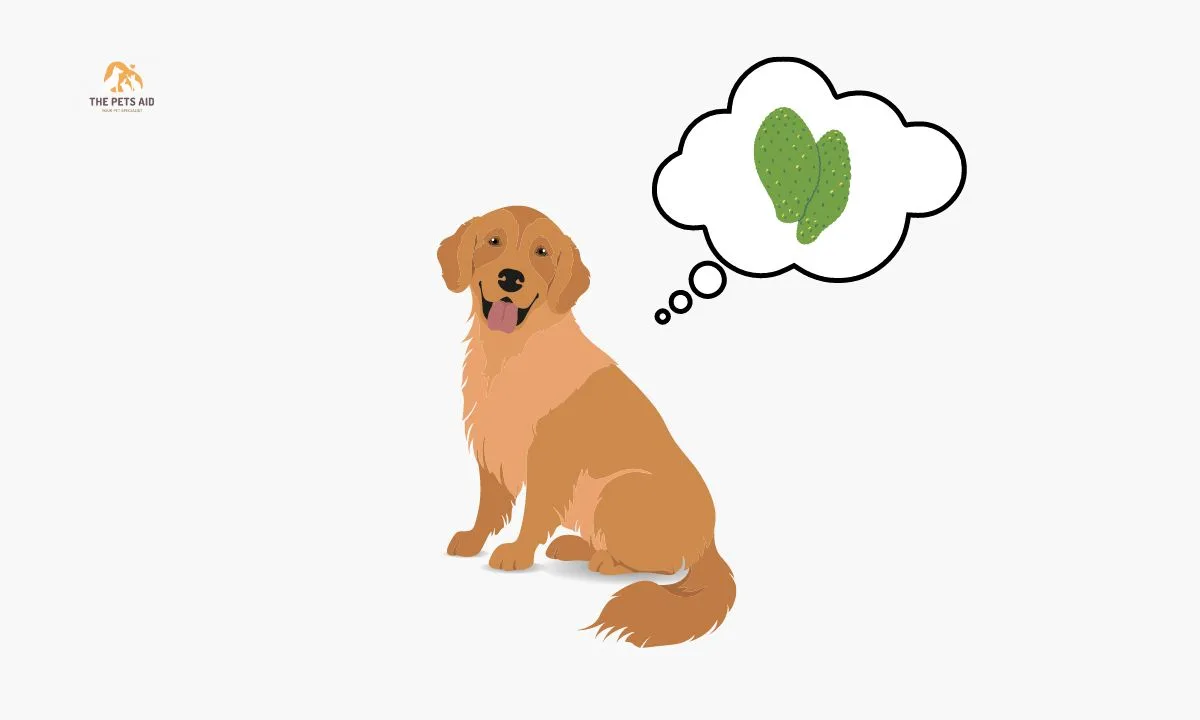Have you seen the video on YouTube, “Dog eats nopales caught on tape! “real”? Yes! It was fun and legit.
As responsible pet owners, we always strive to provide our furry friends with a balanced and nutritious diet. While we often know the basics of what to feed our dogs, the question of whether can dogs have nopales or prickly pear cactus pads may arise.

Highlights:
- Nopales, or prickly pear cactus pads, can be a nutritious addition to your dog’s diet when prepared and introduced cautiously.
- Rich in vitamins and low in calories, nopales offer potential benefits such as hydration and support for weight management.
- Carefully remove thorns and start with small amounts to avoid digestive upset; always consult your veterinarian before making dietary changes.
- Monitor for any signs of allergies or sensitivities in your dog when introducing new foods like nopales.
- Prioritize your dog’s well-being by ensuring a balanced and varied diet that aligns with their health needs.
Additional Resources:
What are Nopales?
Nopales are the flat, green pads of the prickly pear cactus, commonly found in Mexican and southwestern cuisine. These pads are a popular human food and are known for their nutritional value.
Can Dogs Have Nopales?
Yes, dogs can have nopales (prickly pear cactus pads) in moderation after removing thorns. Nopales are rich in nutrients and can be a healthy addition to a dog’s diet, but it’s essential to introduce them gradually and consult with a veterinarian for personalized advice.
Here, we’ll explore the potential benefits and considerations of including nopales in your dog’s diet.
Benefits of Nopales for Dogs

Nopales offer dogs essential nutrients like vitamins A and C, potassium, and dietary fiber, contributing to overall health, hydration, and weight management when introduced in moderation.
- Rich in Nutrients: Nopales are a good source of essential nutrients, including vitamins A and C, potassium, and dietary fiber. These nutrients can contribute to your dog’s overall health and well-being.
- Hydration: Nopales have a high water content, which can aid in keeping your dog hydrated, especially during warmer weather. Proper hydration is crucial for various bodily functions and can support your dog’s skin, coat, and digestion.
- Low in Calories: If your dog is on a weight management program, nopales can be a healthy addition to their diet. The low-calorie content of nopales makes them suitable for dogs prone to weight issues.
Considerations Before Feeding Nopales to Dogs
Before feeding nopales to dogs, remove thorns, introduce them gradually in moderation, consult a vet for personalized advice, and monitor for any signs of allergies or sensitivities.
- Removal of Thorns: Before offering nopales to your dog, removing the thorns carefully is essential. The sharp spines can cause injury to your dog’s mouth, throat, or digestive tract. Make sure to clean and prepare the nopales thoroughly.
- Moderation is Key: While nopales can provide various health benefits, moderation is crucial. Introduce them gradually into your dog’s diet to observe how they react. Excessive consumption might lead to digestive upset, so it’s best to start with small amounts.
- Consult Your Veterinarian: Before making any significant changes to your dog’s diet, it’s always a good idea to consult with your veterinarian. They can provide personalized advice based on your dog’s specific health needs, age, and breed.
- Allergies and Sensitivities: Some dogs may be allergic to certain foods, including nopales. Monitor your dog for any signs of allergies, such as itching, redness, or gastrointestinal issues, and discontinue feeding if such symptoms occur.
Dog Food with Nopal Cactus
To make dog food with Nopal cactus, clean and cut the cactus pads, cook them in the microwave, mix with dog food and chopped chicken, then serve the nutritious blend to your furry friend in tailored portions.
Step 1: Creating the Nopal Cactus Base
The first step in making dog food with Nopal cactus involves harvesting the cactus pads. Once gathered, the pads are meticulously cleaned, with extra attention given to removing all thorns to avoid harming our pets. The cleaned Nopal cactus pads are cut into small, manageable pieces using scissors.
Step 2: Cooking and Mixing
The prepared Nopal cactus pieces are placed in the microwave, creating a soft and palatable texture. Once cooked, they are mixed with dog food to add nutritional value and an extra layer of flavor.
Chopped chicken is introduced into the mix to enhance the taste and nutritional profile, creating a well-rounded and satisfying meal for our canine companions.
Step 3: Feeding Time
The finished product is then served to the dogs, and the video showcases the enthusiasm with which the pets devour their meals.
The narrator emphasizes the enjoyment dogs derive from the unique combination of flavors, asserting that dogs truly love the delectable blend of Nopal cactus, chicken, and dog food.
Step 4: Tailored Portions for Different Sizes
To ensure every dog gets the right portion, the narrator demonstrates the separation of the food into servings for both big and small dogs. This thoughtful approach acknowledges the diverse needs of dogs and allows for a customized feeding experience.
FAQs
Can dogs eat nopales raw, or do they need to be cooked?
While some dogs may be able to consume raw nopales, cooking them before feeding them to your dog is generally recommended. Cooking helps soften the pads and removes the thorns, making them safer and more digestible.
Are nopales suitable for all dog breeds?
Nopales can be included in the diet of most dog breeds, but individual dogs may have different tolerances and preferences. It’s important to monitor your dog for any signs of allergies or sensitivities and consult your veterinarian if you have specific concerns about your dog’s breed.
How many nopales can I feed my dog?
Start by introducing small amounts of nopales into your dog’s diet, gradually increasing the quantity as you observe their reaction. A few small pieces a couple of times a week should be sufficient. Remember, moderation is key.
Can nopales help with my dog’s weight management?
A4: Yes, nopales can be a beneficial addition to a weight management plan for dogs due to their low-calorie and high water content. However, it’s essential to consider the overall diet and consult your veterinarian for personalized advice.
Should I watch for any signs of allergies or sensitivities?
Keep an eye out for signs such as itching, redness, digestive upset, or changes in behavior after introducing nopales. If you notice any adverse reactions, discontinue feeding and consult your veterinarian to determine if your dog has an allergy or sensitivity.
Can nopales be included in a dog’s regular diet?
A6: Yes, nopales can be included as part of your dog’s varied and balanced diet. However, they should not replace their regular food; the key is moderation. Always ensure that the nopales are properly prepared and thorn-free before serving.
Can nopales help with my dog’s digestion?
Yes, nopales are a good source of dietary fiber, which can aid in digestion. The fiber content can contribute to a healthy digestive system for your dog, but it’s important not to overfeed, as excessive fiber intake can lead to digestive upset.
How should nopales be prepared for dogs?
A8: Thoroughly clean the nopales to remove thorns, then cook them to make the pads more palatable and easier to digest. Boiling or steaming are common methods of preparation. Avoid using oil, seasonings, or additives that may harm dogs.
Conclusion
In conclusion, nopales can be a healthy addition to your dog’s diet when introduced in moderation and prepared properly. Rich in nutrients and low in calories, these cactus pads offer potential health benefits.
However, it’s crucial to be mindful of thorns, start with small amounts, and consult your veterinarian to ensure that nopales are a suitable and safe choice for your individual furry friend. Always prioritize your dog’s well-being and make informed decisions regarding their nutrition.

